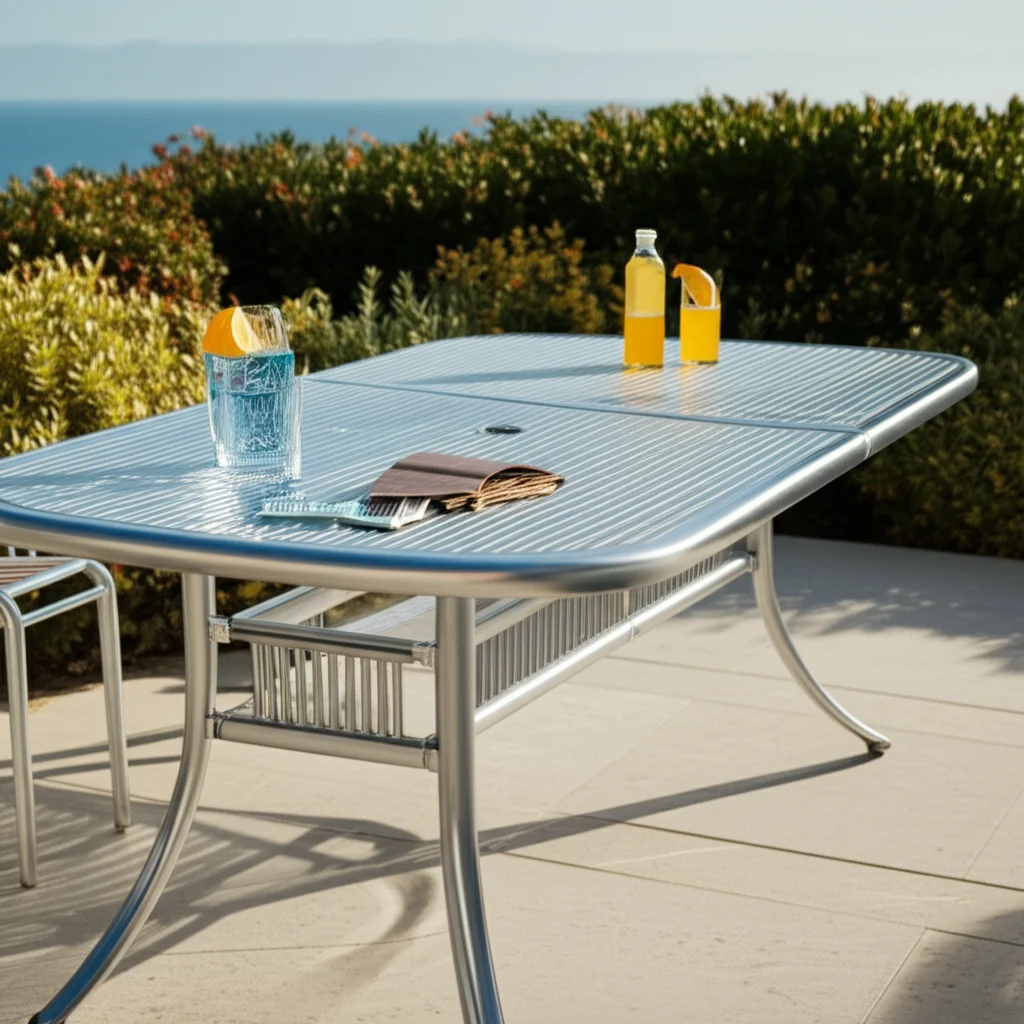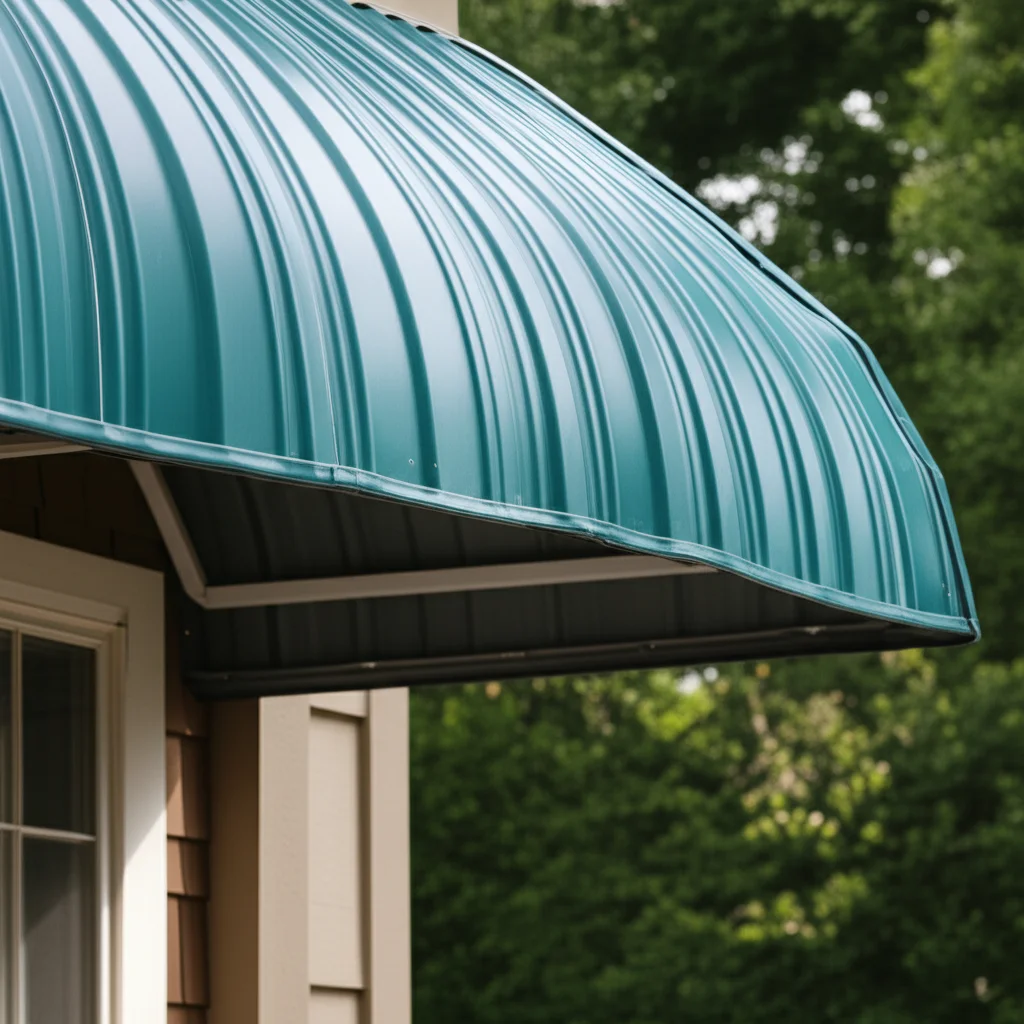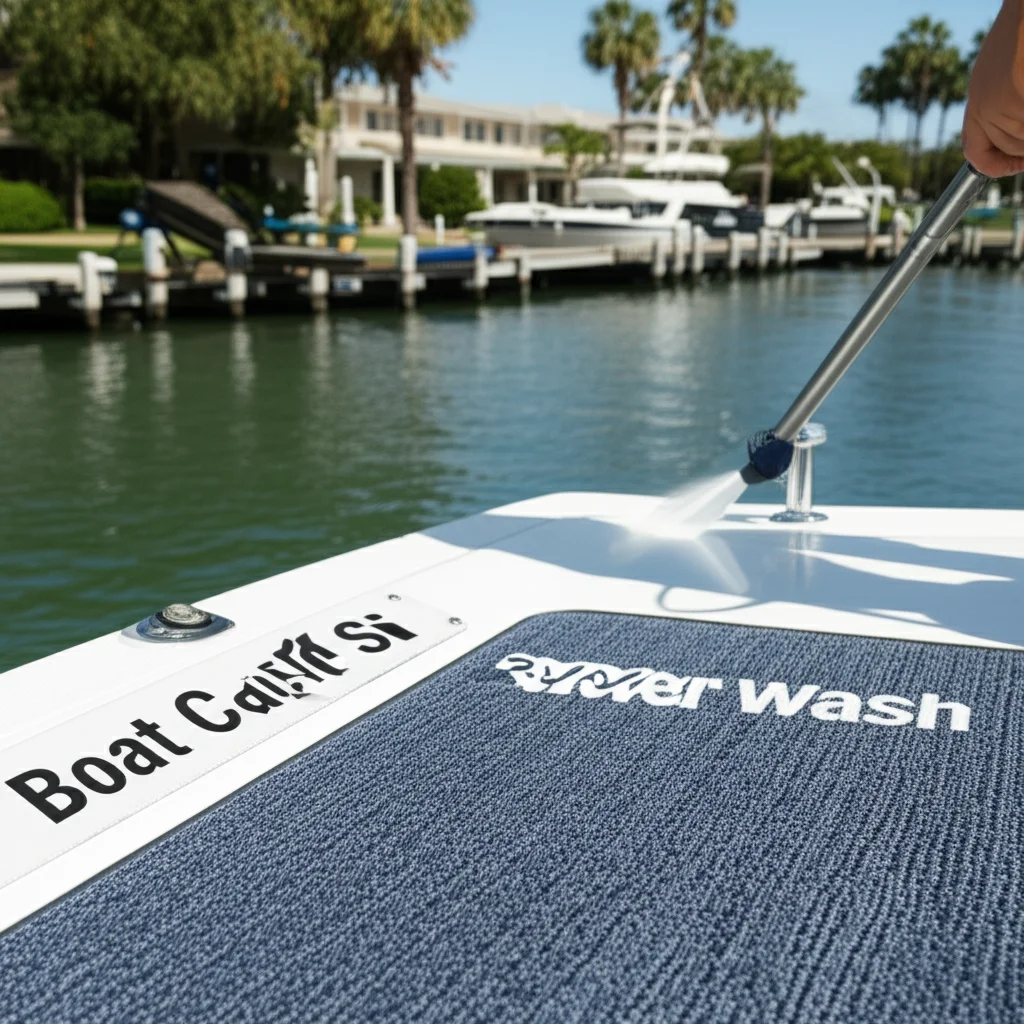· Todd Martin · Boat Care · 19 min read
How To Clean Aluminum Boat

Clean Your Aluminum Boat: A Comprehensive Guide
Maintaining your boat is a vital part of owning one. If you have an aluminum boat, you know how durable it is. However, even these tough vessels need regular care to look their best and last longer. Cleaning an aluminum boat prevents dirt, grime, and oxidation from building up. This guide will show you how to clean your aluminum boat effectively. We cover everything from basic washing to tackling tough stains and protecting the finish. By the end, you will know how to keep your aluminum boat in prime condition for years of enjoyment on the water.
Takeaway:
- Regularly rinse your aluminum boat to prevent salt and grime buildup.
- Use pH-neutral cleaners for general washing and specialized acidic cleaners for oxidation.
- Always test cleaning products on a small, hidden area first.
- Protect your clean aluminum boat with a wax or sealant to extend its shine.
- Address oxidation promptly to maintain your boat’s appearance and integrity.
To clean an aluminum boat, start by rinsing it thoroughly to remove loose dirt. Apply a specialized aluminum boat cleaner or a mild acid solution to treat stains and oxidation. Gently scrub the surfaces with a soft brush, ensuring even coverage. Rinse the boat completely with fresh water and dry it to prevent water spots. Finish by applying a protective wax or polish to keep it looking new and guard against future corrosion.
Understanding Your Aluminum Boat’s Needs
Aluminum boats are popular for their strength, light weight, and resistance to corrosion. Yet, they need specific cleaning methods to maintain their appearance and structural integrity. Unlike fiberglass, aluminum can oxidize, creating a dull, chalky white film. This oxidation is a natural reaction when aluminum is exposed to air and water. Understanding the type of aluminum finish on your boat helps you choose the right cleaning approach.
You will find different types of finishes on aluminum boats. Each finish reacts differently to cleaning agents. Knowing your boat’s finish prevents damage during the cleaning process. It also ensures you get the best results. I always check my boat’s specifications before buying new cleaning products.
Raw Aluminum Finishes
Many aluminum boats have a raw, unpainted finish. This type of aluminum is highly susceptible to oxidation. The dull, white film is most noticeable on raw aluminum. Cleaning raw aluminum often involves acidic cleaners to remove this oxidation. These cleaners restore the metal’s natural shine. However, using the wrong product or scrubbing too hard can scratch the surface. Always use soft brushes and follow product directions carefully.
Raw aluminum is also prone to staining from hard water, marine growth, and exhaust fumes. Regular cleaning prevents these stains from becoming permanent. I make sure to rinse my raw aluminum boat after every use, especially in saltwater. This simple step reduces the chances of severe oxidation. It also makes deeper cleaning less of a chore later on.
Painted Aluminum Finishes
Some aluminum boats come with a painted finish. This paint provides an extra layer of protection against oxidation and wear. Cleaning a painted aluminum boat is similar to cleaning a car. You want to use gentle, pH-neutral soaps. Harsh chemicals or abrasive scrubbers can damage the paint. Such damage might lead to chipping, fading, or peeling.
If your boat has painted aluminum, avoid using strong acid-based cleaners meant for raw aluminum. These can strip the paint. Instead, focus on removing dirt and grime gently. You should also regularly wax painted surfaces. Waxing adds a protective layer and enhances the shine. I use a soft sponge and specific boat wash soap for my painted aluminum surfaces.
Anodized Aluminum Components
Anodized aluminum has a factory-applied protective layer. This layer makes the aluminum more durable and corrosion-resistant. You often find anodized aluminum on boat railings, trim, or specific pontoons. Cleaning anodized aluminum requires gentle care. Harsh chemicals can damage the anodized coating. Once this coating is damaged, the aluminum underneath becomes vulnerable.
For anodized parts, use mild soap and water. Avoid abrasive cleaners or brushes. If you need to tackle tough spots, look for cleaners specifically labeled safe for anodized surfaces. Never use strong acids or polishes on anodized aluminum. They will dull or remove the protective layer. To learn more about this, check out our guide on how to clean anodized aluminum.
Gathering Your Aluminum Boat Cleaning Supplies
Having the right tools and products makes the cleaning process easier and more effective. Using incorrect supplies can damage your boat’s finish. I always gather everything before I start. This saves time and ensures I have what I need. Safety gear is also important, especially when working with strong chemicals.
Think about the type of dirt and stains you expect to clean. Is it just general grime or heavy oxidation? Your choice of cleaner will depend on this. I keep a dedicated set of cleaning supplies for my boat. This helps me stay organized.
Essential Tools for Cleaning
You will need several basic tools for effective aluminum boat cleaning. A good quality pressure washer with a wide spray nozzle can speed up the initial rinse. A garden hose with a spray nozzle also works well for rinsing. You will also need buckets for mixing cleaning solutions. Make sure to have plenty of soft brushes and sponges.
- Soft-bristle brushes: Choose brushes designed for boat cleaning. They should not scratch aluminum. Different sizes help reach all areas.
- Microfiber towels or chamois cloths: These are great for drying without leaving water spots.
- Pressure washer (optional): Use on a low setting with a wide fan tip to avoid damaging surfaces.
- Garden hose with spray nozzle: Essential for rinsing.
- Two large buckets: One for wash solution, one for rinse water.
Choosing the Right Cleaners
Selecting the correct cleaner is vital for aluminum boats. General boat washes work for light dirt and grime. For oxidation, rust, or tough stains, you need specialized aluminum cleaners. These are often acid-based. Always check the label to ensure the product is safe for aluminum. Some cleaners are specifically designed for painted or anodized surfaces.
- pH-neutral boat soap: Ideal for general cleaning of all aluminum surfaces, including painted ones.
- Aluminum hull cleaner: These are typically acid-based. They are effective at removing oxidation, waterline stains, and barnacles. Be cautious and follow directions carefully.
- Degreaser: Useful for removing grease, oil, and exhaust stains.
- Wax or sealant: For protecting the clean aluminum surface. Choose marine-grade products.
- Metal polish: If you want to achieve a mirror-like shine on raw aluminum.
Safety First: Protecting Yourself
Cleaning with chemicals requires safety precautions. Always read the product labels for specific safety instructions. Most aluminum cleaners are acidic and can cause skin and eye irritation. Wearing protective gear is non-negotiable. I never skip this step.
- Rubber gloves: Protect your hands from harsh chemicals.
- Eye protection (safety goggles): Essential to prevent splashes from entering your eyes.
- Respirator or face mask: If working with strong fumes in a poorly ventilated area.
- Old clothes: To avoid ruining your good clothing.
- Adequate ventilation: Work outdoors or in a well-ventilated space.
Step-by-Step Guide to Cleaning Aluminum Boat Exteriors
Cleaning the exterior of your aluminum boat can seem like a big job. Breaking it down into steps makes it manageable. This process ensures thorough cleaning and protection of your boat’s finish. I follow these steps every time I do a deep clean.
Consistency is key for long-term boat care. Regular cleaning prevents damage and keeps your boat looking good. This detailed process addresses both general grime and tougher issues like oxidation.
Pre-Rinse and Initial Dirt Removal
Start by rinsing your entire boat with fresh water. Use a hose or a pressure washer on a low-pressure setting. This step removes loose dirt, salt spray, and any marine growth that is not firmly attached. Pay attention to the hull, deck, and transom. The goal is to get rid of as much surface debris as possible. This makes the cleaning solutions more effective.
Rinsing from top to bottom helps direct dirty water away. Make sure to rinse areas like under the gunwales and inside storage compartments. A good pre-rinse saves you effort in later steps. I usually spend a good 10-15 minutes on this initial rinse.
Addressing Oxidation and Stains
Once rinsed, it’s time to tackle the tougher issues. Oxidation is a common problem for aluminum boats. It appears as a dull, whitish film. You also might see rust stains from metal components or stubborn waterline stains. For these, you need specialized cleaners. Apply the cleaner according to the product instructions. Many aluminum cleaners are acid-based. They work by dissolving the oxidation and stains.
Work in small sections, especially on a hot day, to prevent the cleaner from drying. Apply the cleaner evenly using a soft brush or a spray bottle. Let it sit for the recommended time, usually a few minutes. Avoid letting it dry on the surface. For severe oxidation, you might need a stronger product or a second application. Our guide on how to clean oxidation from aluminum provides more detail on this specific challenge.
Scrubbing Techniques
After applying the cleaner, gently scrub the surface. Use a soft-bristle brush or a non-abrasive scrubbing pad. Work in small, manageable areas. Scrubbing helps the cleaner penetrate and lift the dirt and oxidation. For painted aluminum, use only a soft sponge or cloth to avoid scratching the paint.
For raw aluminum, some elbow grease might be necessary, but avoid overly aggressive scrubbing. This can cause swirl marks or damage the surface. Always scrub with the grain of the aluminum if possible. Pay close attention to corners, crevices, and areas with heavy staining. I often use different sized brushes to reach every spot.
Final Rinse and Drying
Thorough rinsing is crucial after cleaning your aluminum boat. Any cleaner left on the surface can cause damage or leave streaks. Rinse the entire boat, again working from top to bottom, with plenty of fresh water. Make sure all cleaning solution is completely washed away. Use a hose or low-pressure washer for this.
After rinsing, dry the boat to prevent water spots. You can use a chamois, microfiber towels, or a leaf blower. Drying also helps you see the results of your cleaning efforts. It prepares the surface for any protective treatments like waxing. I find that quick drying ensures a streak-free finish, especially on shiny surfaces.
Cleaning Specific Areas of Your Aluminum Boat
An aluminum boat has many different surfaces and components. Each area might require a slightly different cleaning approach. Focusing on these specific zones ensures a comprehensive clean. This attention to detail improves the boat’s overall appearance and longevity.
I always break down the cleaning process by area. This method ensures nothing is missed. It also helps in choosing the right tools and products for each part.
Hull and Underside
The hull is the most exposed part of your boat, especially if it stays in the water. It collects algae, barnacles, and waterline stains. For the hull, a strong aluminum hull cleaner is usually necessary. Apply the cleaner following the directions, focusing on the waterline and any areas with heavy growth. Use a stiff, but non-abrasive, brush to scrub away marine growth and stains.
Be careful when working under the boat, especially if it’s on a trailer. Ensure the boat is stable. Rinse the hull thoroughly after scrubbing. For more general advice on hull cleaning, you can refer to our article on how to clean boat hull. If your boat is on an aluminum trailer, you might also want to clean that, as covered in how to clean aluminum trailer.
Deck and Interior
The deck and interior areas of an aluminum boat often accumulate dirt, sand, and spills. Use a mild boat soap and water for these surfaces. A soft brush or sponge works well for scrubbing the deck. For non-skid areas, a stiffer brush might be needed. Rinse the deck thoroughly, making sure water drains properly.
For any specific aluminum parts like consoles or diamond plate, you can use the same mild soap or a specialized aluminum polish. If you have aluminum diamond plate, you might find our guide on how to clean aluminum diamond plate helpful. Remember to wipe down all surfaces. This prevents water spots and mildew.
Tubes and Pontoons (for Pontoon Boats)
If you own an aluminum pontoon boat, the tubes are a significant part of the cleaning job. Pontoon tubes are constantly in the water and can accumulate significant grime, algae, and oxidation. Use an acid-based aluminum cleaner specifically designed for pontoons. Apply it evenly. Allow it to work for the recommended time.
Scrub the tubes with a long-handled, soft-bristle brush. Pay special attention to the front and sides of the tubes where growth is most common. Rinse thoroughly, ensuring all cleaner is removed. Polishing the tubes after cleaning can give them a brilliant shine.
Protecting Your Aluminum Boat After Cleaning
Cleaning your aluminum boat is only half the battle. Protecting the freshly cleaned surface is crucial for maintaining its appearance and preventing future damage. A good protective layer guards against oxidation, stains, and UV damage. This step extends the life of your clean finish.
Applying protection saves you time and effort in the long run. It makes future cleanings easier. I always make sure to apply a protective coating after every deep clean.
Waxing and Polishing Raw Aluminum
For raw, unpainted aluminum, waxing or polishing adds a protective barrier and enhances shine. After cleaning and drying, apply a marine-grade aluminum polish. Follow the product instructions for application and buffing. Polishes help restore the luster of the metal. They can also fill in tiny scratches.
After polishing, apply a protective wax or sealant designed for marine aluminum. This wax forms a clear barrier. It repels water, salt, and dirt. It also slows down the oxidation process. Apply wax in thin, even coats and buff to a shine. Regular waxing makes cleaning easier and keeps the boat looking new.
Protecting Painted and Anodized Surfaces
Painted aluminum boats benefit from regular waxing, just like a car. Use a high-quality marine wax or sealant. This protects the paint from UV rays, fading, and minor scratches. Apply it after washing and drying. It helps maintain the paint’s color and shine.
For anodized aluminum, use a protectant specifically designed for anodized surfaces. These products typically form a clear, non-greasy barrier. They protect the anodized layer without damaging it. Avoid waxes with abrasive properties on anodized surfaces. To refresh your knowledge on this, revisit how to clean anodized aluminum.
Anti-Fouling Paint for Submerged Sections
If your aluminum boat stays in the water for extended periods, consider applying anti-fouling paint. This paint prevents marine organisms like barnacles and algae from attaching to the hull. However, you must choose anti-fouling paint specifically formulated for aluminum. Copper-based paints can cause galvanic corrosion on aluminum.
Always check the product label to ensure compatibility with aluminum. Apply anti-fouling paint only to the submerged parts of the hull. This specialized paint is an important protective measure for boats left in the water. It reduces the need for harsh scrubbing later.
Cleaning Your Aluminum Boat’s Interior and Accessories
While the exterior gets most of the attention, the interior of your aluminum boat also needs care. Keeping the inside clean improves comfort and prevents mold and mildew. This includes seats, flooring, and other accessories. A full detail means addressing all areas of the boat.
I make sure to clean the interior thoroughly after cleaning the exterior. It gives the whole boat a refreshed feel. Neglecting the interior can lead to unpleasant odors and damage over time.
Maintaining Boat Carpeting
If your aluminum boat has carpeting, it can trap dirt, sand, and moisture. Use a marine-grade carpet cleaner for spills and stains. Vacuum the carpet regularly to remove loose debris. For deep cleaning, you can use a wet/dry vacuum with a carpet cleaning solution. Ensure the carpet dries completely to prevent mold and mildew growth.
Good ventilation helps speed up drying. If your boat has removable carpet sections, take them out to dry fully in the sun. Our guide on how to clean boat carpet provides more detailed instructions for various carpet cleaning scenarios.
Caring for Boat Seats and Upholstery
Boat seats, whether vinyl or fabric, can get dirty and moldy. For vinyl seats, use a mild boat soap or a specialized vinyl cleaner. Wipe them down with a soft cloth. For stubborn stains or mold, use a marine-grade mold remover. Make sure it’s safe for your upholstery material. You can find more specific tips on how to clean vinyl boat seats.
For fabric seats or cushions, spot clean with a fabric cleaner or a mix of mild soap and water. Always test on an inconspicuous area first. Ensure cushions dry completely before storing them or covering the boat. This prevents mildew. If you have boat cushions, our article on how to clean boat cushions can offer additional help.
Cleaning Windows and Other Accessories
Plastic windows on a boat can scratch easily. Use a soft cloth and a plastic-safe cleaner for clear plastic windows. Never use abrasive cleaners or paper towels. For glass windows, a standard glass cleaner works well. Wipe down dashboards, consoles, and fishing rod holders with an all-purpose marine cleaner.
Ensure all electronics are turned off and covered before cleaning around them. Wipe down all surfaces. This prevents dust and grime buildup. Regularly checking and cleaning these smaller accessories contributes to the overall cleanliness of your boat. For plastic windows, consider our guide on how to clean plastic windows on a boat.
Common Challenges and Troubleshooting for Aluminum Boat Cleaning
Cleaning an aluminum boat can sometimes present specific challenges. Oxidation, streaks, and stubborn stains are common issues. Knowing how to troubleshoot these problems helps you achieve the best results. It also prevents frustration.
I have faced many cleaning challenges over the years. Learning how to deal with them has made me more efficient. Here are some common problems and solutions.
Preventing and Removing Oxidation
Oxidation is the most common issue with aluminum boats. Prevention is the best approach. Regularly rinse your boat, especially after saltwater exposure. Apply a good wax or sealant to create a barrier. If oxidation has already set in, an acid-based aluminum cleaner is your go-to. Apply it, let it dwell, and scrub gently. Repeat if necessary. For very heavy oxidation, you might need a stronger commercial product or professional help. Always try the least aggressive method first.
Dealing with Streaks and Water Spots
Streaks and water spots often occur if the boat is not rinsed thoroughly or dried properly. Hard water can leave mineral deposits. To prevent streaks, rinse the boat meticulously after applying any cleaner. Use a strong stream of fresh water. Dry the boat immediately after rinsing using a chamois or microfiber towels. If water spots are present, a diluted vinegar solution (50/50 with water) can help dissolve them. Follow with a fresh water rinse and dry.
Tackling Tough Stains (Rust, Oil, Algae)
Different stains require different treatments.
- Rust stains: These often come from steel components or fishing gear. Use an oxalic acid-based rust stain remover. Apply it directly to the stain, let it sit, and then rinse.
- Oil and grease: A marine-grade degreaser works best for oil and fuel stains. Spray it on, let it penetrate, then scrub and rinse.
- Algae and mildew: For green algae or black mildew spots, a bleach-based cleaner (diluted) can be effective. However, be extremely careful with bleach on aluminum. It can etch or pit the metal if left too long. Test in an inconspicuous area first. Rinse immediately and thoroughly. Specialized marine mildew removers are often safer alternatives.
Pressure Washing Precautions
While a pressure washer can be useful for the initial rinse, use it with extreme caution on an aluminum boat. High pressure can dent the aluminum, peel paint, or force water into crevices. Always use a wide-fan tip (e.g., 25-40 degrees). Keep the nozzle a good distance from the surface. Use the lowest effective pressure setting. Never aim directly at seals, decals, or sensitive areas. Hand-scrubbing is always safer for painted or anodized surfaces.
Frequently Asked Questions
How often should I clean my aluminum boat?
The frequency depends on how often you use your boat and the type of water it’s in. If you use it often, a quick rinse after every trip is ideal. A thorough wash with soap every 1-2 months is good for general maintenance. If your boat is in saltwater or exposed to harsh conditions, a deep clean every 3-6 months is beneficial. I always give mine a deep clean before and after the boating season.
Can I use household cleaners on aluminum boats?
Most household cleaners are not ideal for aluminum boats. Products like dish soap are generally safe for light washing but do not address oxidation. Harsh cleaners like bleach or oven cleaner can severely damage aluminum and its coatings. They can etch the metal or strip protective layers. Always opt for marine-specific cleaning products designed for aluminum to ensure safety and effectiveness.
What causes oxidation on aluminum boats?
Oxidation on aluminum boats is a natural process. It happens when aluminum reacts with oxygen in the air and water, especially saltwater. This reaction forms a layer of aluminum oxide. It appears as a dull, white, chalky film. Humidity, UV exposure, and environmental pollutants also speed up this process. Proper cleaning and protection help slow down oxidation.
Is pressure washing safe for aluminum boats?
Pressure washing can be safe if done correctly, but it carries risks. Use a pressure washer on a low-pressure setting (below 1200 PSI) with a wide-fan nozzle (25-40 degrees). Keep the nozzle at least 1-2 feet away from the surface. High pressure can dent aluminum, damage paint, or strip decals. For delicate areas or painted surfaces, hand-washing is always the safest option.
How do I protect my aluminum boat from corrosion?
Protecting your aluminum boat from corrosion involves several steps. Regularly clean the boat to remove corrosive elements like salt and dirt. Apply a marine-grade wax or sealant to create a protective barrier. For boats kept in water, use an aluminum-safe anti-fouling paint on the hull. Ensure all electrical connections are properly insulated and bonded to prevent galvanic corrosion.
What’s the difference between cleaning raw and painted aluminum?
Cleaning raw aluminum focuses on removing oxidation and restoring shine, often with acid-based cleaners. It can be more aggressive. Cleaning painted aluminum is gentler. You use mild, pH-neutral soaps to avoid damaging the paint. Painted surfaces benefit from waxing for UV protection. Anodized aluminum also requires gentle, non-abrasive cleaners to preserve its protective coating.
Conclusion
Keeping your aluminum boat clean is more than just about looks; it is about preserving your investment. Regular cleaning prevents damage from oxidation, marine growth, and environmental factors. We have covered everything from understanding your boat’s finish to selecting the right tools and tackling tough stains. By following these comprehensive steps, you can ensure your aluminum boat remains in top condition for many years of fun on the water.
Remember to prioritize safety, choose appropriate products, and be thorough in your efforts. A well-maintained boat brings more enjoyment and holds its value better. Take pride in your vessel and establish a consistent cleaning routine. Start your aluminum boat cleaning project today.





